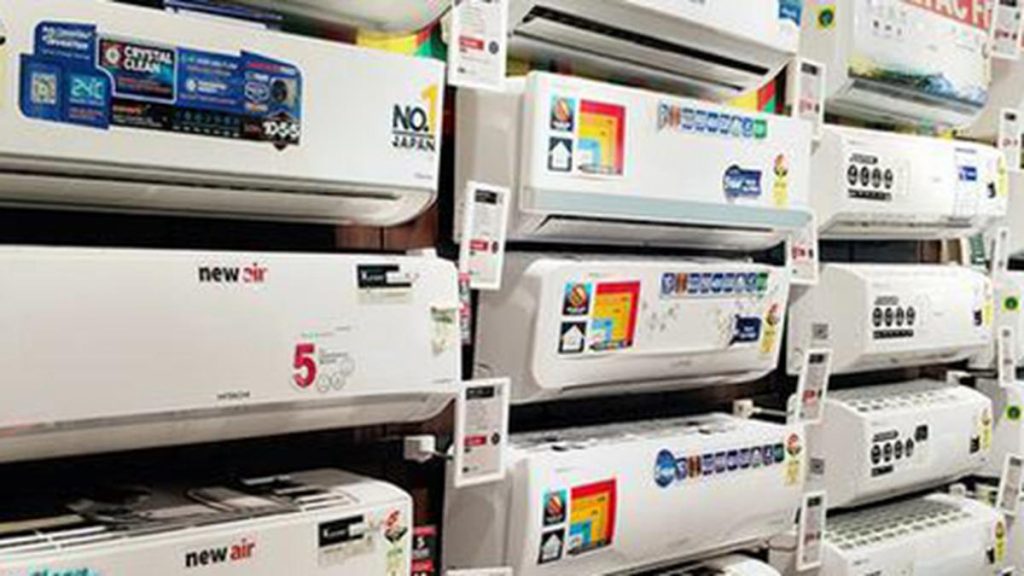As India braces for another intense summer, the country’s power grid is once again under strain. With temperatures soaring past 45°C in many regions, millions of households and businesses are switching on their air conditioners (ACs) for relief. But while ACs provide essential comfort and protection, they are fast becoming the single largest driver of peak electricity demand—especially during the evening and nighttime hours when solar generation fades but the heat lingers.
India is currently adding 10 to 15 million ACs each year, with another 150 million expected over the next decade. Our recent study shows that without urgent policy action, ACs alone could contribute as much as 120 gigawatts (GW) to peak electricity demand by 2030 and 180 GW by 2035. That would represent nearly one-third of India’s projected evening peak—placing enormous stress on the grid, requiring expensive new investments in power generation and storage, and significantly increasing the risk of blackouts. For perspective, the demand from this one appliance alone would exceed the peak electricity demand of the entire country of Japan.
This crisis is not hypothetical—it’s already underway. In May 2024, India’s national evening peak hit an all-time high of 240 GW, driven largely by cooling loads. While the country has made remarkable progress in building renewable capacity, solar power tapers off just when cooling demand surges. Even with many new thermal and hydro plants under construction, India faces a projected shortfall in firm capacity as early as 2026—just one summer away. The most immediate and cost-effective solution lies in improving the energy efficiency of air conditioners. Ensuring that only high-efficiency ACs are sold going forward can significantly narrow the demand-supply gap and enhance grid reliability in the critical years ahead.
Outdated standards
At the heart of this challenge lies India’s outdated minimum energy performance standards (MEPS) for room air conditioners. ACs sold in India are required to carry energy labels from one to five stars, with the one-star level serving as the minimum standard. However, for inverter (variable-speed) ACs—which now dominate the market—India’s one-star rating is nearly 50% less efficient than the minimum standard in countries like China and Japan. In fact, China’s current minimum requirement is comparable to India’s five-star rating, meaning most ACs sold in India today wouldn’t even qualify for sale in the Chinese market.
Yet the gap is not difficult to close. Our research proposes a clear, realistic roadmap for progressively raising India’s MEPS over the next decade. Starting in 2027, the minimum standard could be set to the current five-star level (ISEER 5.0, or Indian Seasonal Energy Efficiency Ratio), then gradually increased to ISEER 6.3 by 2030—matching the most efficient AC models already available in India—and finally to ISEER 7.4 by 2033, aligned with global best-in-class performance. Each of these steps is grounded in technologies already being manufactured and sold by leading Indian and international brands.
This trajectory would give manufacturers the long-term clarity needed to invest in advanced components, such as high-efficiency compressors, heat exchangers, and smart control systems. Without a predictable policy signal, manufacturers are hesitant to retool their supply chains and scale up production of energy-efficient models. But with a phased, transparent MEPS timeline, they can plan, invest, and innovate with confidence.
Importantly, the Indian market is already ahead of its own regulations. As of 2024, over 600 AC models—representing more than 20% of available options and 23% of total market share—exceed the current five-star level. Moreover, leading manufacturers such as Godrej, Voltas, Blue Star, Daikin, and Hitachi are already offering super-efficient models (above ISEER 6.0) at competitive prices. This means the technology and supply chains appear ready. The only missing ingredient is policy ambition.
A cost-effective strategy
Tightening AC efficiency standards is one of the fastest, most cost-effective ways to reduce future electricity demand and strengthen India’s power system. According to our study, a strengthened MEPS could reduce peak demand by 10 GW by 2028, 23 GW by 2030, and 60 GW by 2035—the equivalent of 120 large power plants. These reductions would help India avoid up to ₹7.5 trillion (about $85 billion) in new power generation and grid infrastructure costs.
Consumers also stand to benefit directly. Although energy-efficient ACs may carry slightly higher upfront prices, they pay for themselves in two to three years through lower electricity bills. Over time, the net savings are substantial—ranging from ₹66,000 crore to ₹2.25 lakh crore ($8–26 billion) by 2035. That’s real money going back into the pockets of Indian households and small businesses.
Contrary to popular belief, upgrading efficiency standards doesn’t always mean higher prices. In both Indian and global markets, past MEPS revisions have not led to price spikes. In fact, inflation-adjusted AC prices have continued to decline over time, driven by economies of scale, improved supply chains, and greater competition. Our study confirms that energy efficiency is not the primary driver of AC prices in India. Many efficient, no-frills models are now available at prices that are comparable to less efficient models.
Improving energy efficiency is India’s hidden power plant. By 2035, improved AC efficiency could save as much as 120 terawatt-hours of electricity annually—the same output as 60 GW of solar capacity. Building that much capacity would require vast capital, land, and grid upgrades. Efficiency delivers the same result faster, cheaper, and with zero emissions.
A national opportunity
If efficient ACs are already available and some consumers are buying them, why do we need tighter standards? The answer lies in scale and speed. Left to market forces alone, efficiency adoption will continue, but far too slowly to meet the urgency of India’s power crisis. This is a classic case of market failure. Most consumers still buy 3-star or lower-rated ACs. For many, the higher upfront cost is a deterrent. In some cases, consumers are unaware of efficiency ratings, or retailers push low-efficiency models due to higher margins. In rental markets, the disconnect between the AC buyer and the electricity bill payer further weakens incentives to choose efficient products.
Tightening MEPS is the most powerful way to transform the market quickly—shifting the entire baseline upward, lowering electricity demand, and ensuring that every new AC sold in India contributes to a more reliable and affordable grid. Raising AC standards is not just an energy efficiency measure—it’s a power system reliability safeguard, a consumer savings strategy, and an industrial competitiveness lever all rolled into one.
India has proven before that bold energy interventions work. The UJALA LED program transformed global lighting markets. India is a global leader in solar deployment. With the right policy push, the country can now lead the world in sustainable and affordable cooling. In addition to revising MEPS, complementary measures—such as bulk procurement, targeted subsidies, GST reductions, and production-linked incentives—can further accelerate adoption while supporting domestic manufacturing. Additionally, India should update its AC testing procedures to reflect humid conditions where comfort depends not just on cooling but also on dehumidification.
In the next five years alone, India is projected to add 60 to 70 million new ACs. That’s enough to tilt the country toward either a more resilient energy future or a looming power crisis. The technology is ready. The benefits are undeniable. And the stakes have never been higher. All that remains is bold and timely action.
(Nikit Abhyankar is a faculty member and Jose Domguez is a researcher at the India Energy and Climate Center, University of California, Berkeley)
Published – April 01, 2025 08:00 am IST


